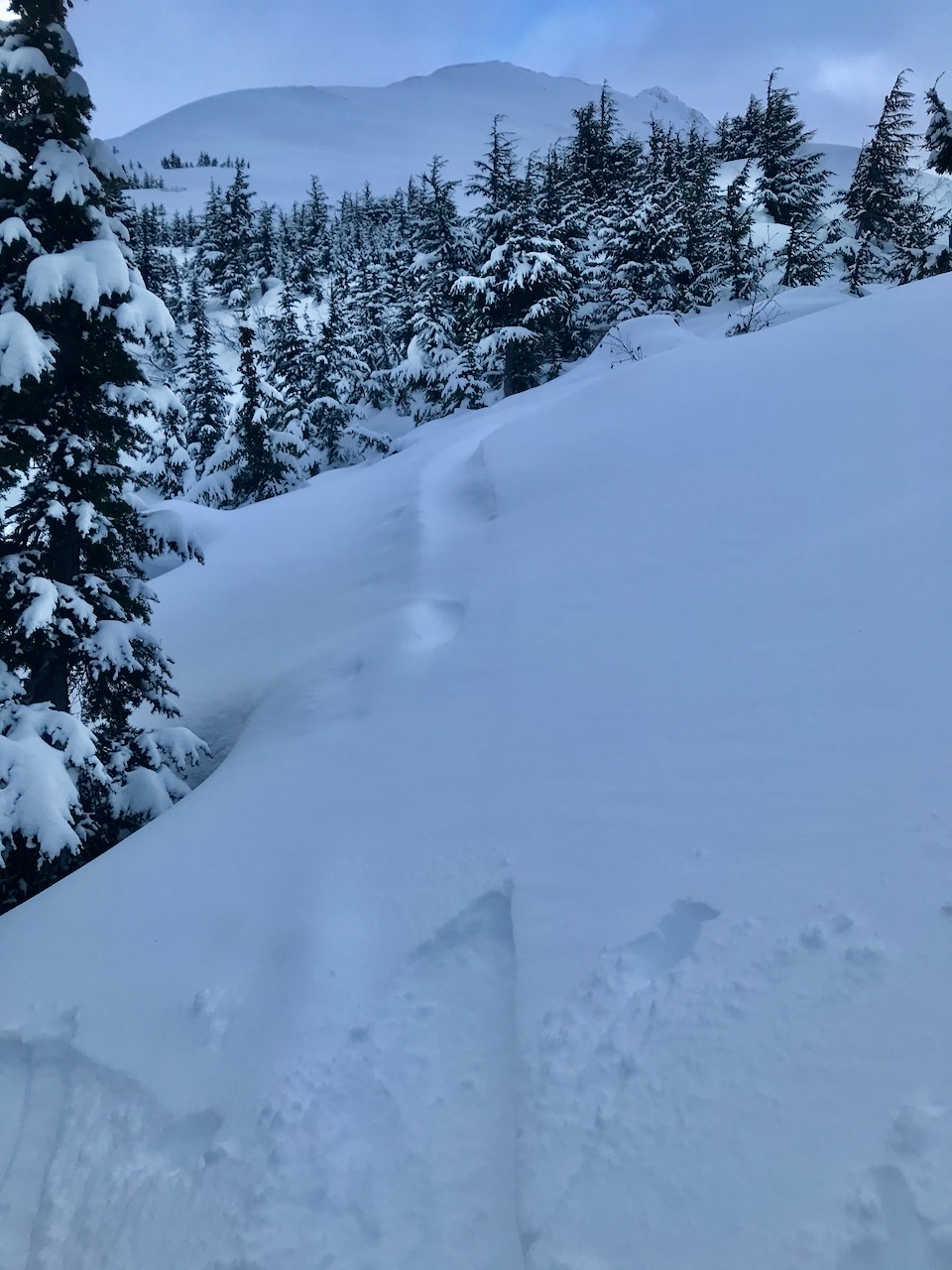Turnagain Pass
|
|
The avalanche danger is expected to rise to MODERATE today in the Alpine (above 2,500′) with light snow fall and increasing winds this afternoon. Human triggered wind slab avalanches, up to a foot thick, will be possible along ridgelines and in cross-loaded gullies. A LOW danger exists below 2,500′ and in areas without wind effect.
With very strong winds and heavy snow ramping up overnight, expect the avalanche danger to rise to HIGH at all elevations by tomorrow morning across the forecast area. The National Weather Service has issued a High Wind Warning in effect from 9 pm tonight until 6 pm Tuesday and a Blizzard Warning in effect from 9 pm tonight until noon Tuesday.
South of Turnagain Pass to SUMMIT LAKE: A thinner and weaker snowpack exists in these areas. On steep rocky terrain above 2500′, there is still a chance a person could trigger a slab avalanche failing near the ground.
It was a sad weekend for avalanche accidents in the lower 48. Three skiers were killed in Colorado and one snowmachiner in Wyoming. These were the first US avalanche fatalities of the 2020/21 season. Our thoughts go out to the families, friends, responders and all impacted by these accidents. Preliminary information can be found HERE.



